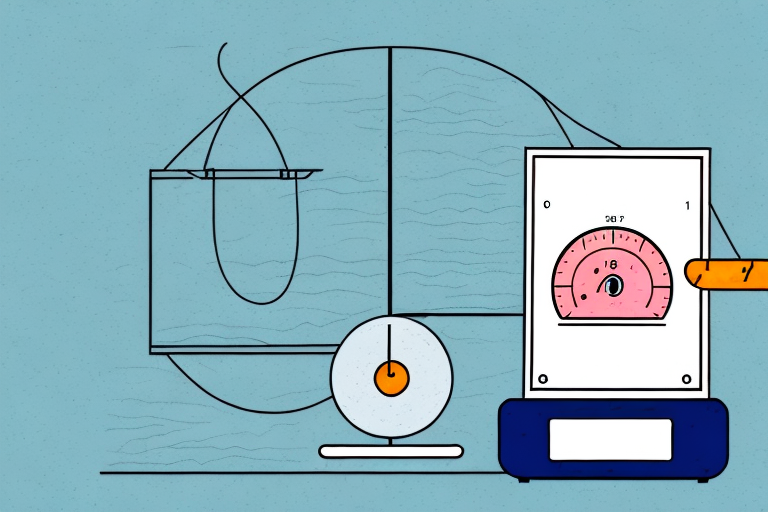Understanding FedEx Shipping Rates by Weight and Size
Shipping with FedEx requires a clear understanding of how package weight and size influence shipping rates. FedEx calculates rates primarily based on package weight, as heavier packages necessitate more fuel for transportation. Additionally, package dimensions are crucial because larger packages occupy more space on delivery vehicles, potentially affecting delivery efficiency. By comprehending these factors, you can save money, select appropriate packaging, and accurately estimate your shipping costs.
How FedEx Calculates Shipping Rates Based on Package Weight
FedEx uses the weight of a package as a fundamental factor in determining shipping rates. Generally, the heavier the package, the higher the shipping cost. FedEx groups shipments into weight ranges or zones, and the cost varies based on both the zone and the package's weight. For example, shipping a 1lb package within the same city costs significantly less than shipping a 10lb package across the country.
In addition to weight, FedEx considers the dimensions of the package to calculate shipping rates. Larger packages take up more space on delivery trucks or planes, leading to higher shipping costs. To avoid unexpected fees, it's essential to measure and provide accurate dimensions when preparing your shipment.
The delivery speed also impacts shipping rates. FedEx offers a variety of delivery options, ranging from standard ground shipping to overnight express services. Faster delivery options typically incur higher costs, so selecting the option that aligns with your budget and urgency is crucial.
The Role of Package Size in Determining FedEx Shipping Rates
Package size plays a significant role in FedEx's shipping rates. Large packages can be cumbersome to handle and consume more space on delivery vehicles. Consequently, FedEx has established specific size limits for packages eligible for standard shipping rates. Packages exceeding these size constraints or requiring additional handling may incur extra fees.
It's important to note that package size isn't the sole determinant of shipping rates. Weight remains a critical factor. FedEx employs a dimensional weight formula, which considers both the size and weight of a package to determine shipping costs. This means that a smaller, heavier package may cost more to ship than a larger, lighter one.
FedEx offers various shipping options tailored to different package sizes and delivery requirements. For urgent, time-sensitive deliveries, FedEx Express provides faster delivery times at a higher cost. Alternatively, FedEx Ground is a more economical choice for non-urgent shipments, albeit with longer delivery times.
Factors That Influence FedEx Shipping Rates for Weight and Size
Several factors can affect FedEx's shipping rates related to weight and size. These include the package's origin and destination, the selected shipping speed, the type of package, and its declared value. Additionally, FedEx offers volume-based discounts to businesses that ship frequently or in bulk, which can significantly reduce overall shipping costs.
Another critical factor is the dimensional weight of the package. Dimensional weight is a calculation based on the package's size relative to its actual weight. If a package's dimensional weight is higher than its actual weight, FedEx charges based on the dimensional weight to account for the space it occupies on delivery vehicles. To manage costs effectively, it's essential to optimize both the size and weight of your shipments.
How to Accurately Measure Your Package Weight and Dimensions for FedEx Shipping
Accurate measurement of your package's weight and dimensions is vital when shipping with FedEx. Precise measurements help avoid additional fees and ensure accurate rate calculations. Use a digital scale to determine your package's weight and a reliable tape measure to record its dimensions. When measuring, round up as necessary and provide the most exact figures possible.
Consider the packaging materials as part of your measurements. The weight and dimensions of materials like boxes, padding, and other packaging supplies should be included to ensure accurate shipping rates. For irregularly shaped packages, measure the widest points to capture the true dimensions.
Double-checking your measurements before shipping can prevent significant discrepancies in shipping costs. Investing time in accurate measurement practices can lead to substantial savings and a smoother shipping experience.
How to Save Money on FedEx Shipping Rates by Optimizing Your Package Size and Weight
Optimizing your package's size and weight is an effective way to reduce FedEx shipping rates. Select the smallest packaging that sufficiently protects your items. For example, use bubble mailers for small, lightweight items and sturdier boxes for larger or more fragile products. Additionally, minimize the package's weight by opting for lighter packing materials, such as air pillows instead of heavy packing peanuts.
Understanding and managing your package's dimensional weight can also lead to cost savings. Ensure that your packages are as compact as possible by packing items tightly and using appropriately sized packaging materials. This approach helps avoid extra charges based on dimensional weight rather than actual weight.
Tips for Negotiating Better FedEx Shipping Rates Based on Package Weight and Size
Businesses that regularly ship with FedEx may qualify for volume discounts, which can significantly lower shipping costs. To negotiate better rates, ensure your shipping volume meets the minimum thresholds required for discounts. Engage with your FedEx representative to discuss your shipping needs and explore available discount options.
Additionally, optimizing your package's weight and size can make your shipments more cost-effective. By reducing unnecessary weight and minimizing package dimensions, you can benefit from lower shipping rates. Consider consolidating shipments or using more efficient packaging solutions to achieve further savings.
A Breakdown of FedEx's Dimensional Weight Pricing Model
FedEx employs a dimensional weight pricing model for oversized packages, which calculates shipping costs based on a package's size rather than its actual weight. If a package's dimensional weight surpasses its actual weight, FedEx charges based on the dimensional weight. This model ensures that shipping costs fairly reflect the space a package occupies on delivery vehicles.
Many major shipping carriers, including UPS and DHL, utilize dimensional weight pricing, making it a standard industry practice. This approach provides a more accurate method for charging shipping costs related to space consumption during transportation.
For ease of use, FedEx offers a dimensional weight calculator on their website. This tool allows customers to input their package dimensions and weight to determine the most cost-effective shipping rate.
How to Compare FedEx's Weight-Based vs. Dimensional Weight-Based Pricing
When shipping with FedEx, it's essential to compare both weight-based and dimensional weight-based pricing to determine the most economical option. Calculate the shipping cost using both models and choose the one that offers the lowest rate. Typically, weight-based pricing is more favorable for smaller, heavier packages, while dimensional weight pricing benefits larger, lighter items.
Remember that dimensional weight pricing is based on the package's volume rather than its actual weight. Therefore, even lightweight packages can incur higher shipping costs if they occupy significant space. Accurate measurement and efficient packaging are critical in minimizing costs across both pricing models.
Additionally, consider other factors that may influence shipping costs, such as the selected delivery option (express vs. ground) and the destination's proximity. By evaluating all relevant factors, you can make informed decisions to optimize your shipping expenses.
The Impact of Delivery Distance on FedEx Shipping Rates for Weight and Size
Delivery distance is a pivotal factor affecting FedEx's shipping rates. Shipping a package to a longer distance typically results in higher shipping costs due to increased fuel consumption and transit times. Conversely, shipping within closer proximity can reduce costs and often leads to faster delivery times.
FedEx's rate structure varies based on the delivery zone or region. It's important to understand the specific rate structure for your shipping destination to accurately estimate costs. Utilizing FedEx's rate calculators can help you determine the most cost-effective shipping options based on distance and other factors.
How to Estimate Your Total Shipping Costs with FedEx Based on Package Weight and Size
Estimating your total shipping costs with FedEx involves a few straightforward steps. First, determine your package's weight and dimensions using accurate measurement tools. Next, use FedEx's rate calculators to check the estimated shipping rates for your specific package and delivery destination.
Be mindful of additional fees that may apply, such as those for package type, insurance, or special handling requirements. Reviewing FedEx's surcharge policies can provide a comprehensive understanding of potential extra costs.
Understanding the Different Types of Packages That Affect FedEx's Weight and Size Pricing
FedEx offers various package types, each with unique size and weight constraints that influence shipping rates. Understanding the packaging requirements and guidelines for each type ensures your package qualifies for standard shipping rates.
For instance, FedEx Express Saver has a maximum length of 108 inches, while FedEx Ground allows packages up to 165 inches in length. Selecting the appropriate package type based on your shipment's dimensions and weight can prevent additional fees and ensure timely delivery.
Examples of Different Scenarios Where Understanding FedEx's Shipping Rates by Weight and Size Is Crucial
Grasping FedEx's shipping rates based on weight and size is essential in various scenarios:
- Small Businesses: Ensuring accurate shipping costs prevents overcharging customers and maintains competitive pricing.
- Large Enterprises: Optimizing packaging and shipment volume can lead to significant savings on bulk shipping costs.
- Non-Profit Organizations: Accurately calculating shipping rates is vital for budgeting when distributing relief materials or medical supplies.
In each case, a thorough understanding of FedEx's pricing models enables more efficient and cost-effective shipping practices.
Frequently Asked Questions About Calculating FedEx Shipping Rates by Weight and Size
Here are some commonly asked questions regarding the calculation of FedEx shipping rates based on package weight and size:
- 1. How do I know if my package qualifies for standard shipping rates?
Review FedEx's packaging guidelines and size limitations to ensure your package meets the criteria for standard rates. - 2. How can I get discounts on FedEx shipping rates?
Businesses with high shipping volumes can negotiate volume-based discounts with FedEx representatives. - 3. Are there any additional fees or charges for oversized or fragile packages?
Yes, packages that exceed size limits or require special handling may incur extra fees. Refer to FedEx's surcharge policies for details. - 4. Can I estimate my shipping costs with FedEx before I ship my package?
Absolutely. Use FedEx's online rate calculators to estimate shipping costs based on your package's weight, size, and destination. - 5. What are the packaging requirements for different types of FedEx packages?
Each FedEx package type has specific size and weight requirements. Consult FedEx's packaging guidelines to ensure compliance.
For detailed information, consult with FedEx representatives or visit the FedEx Shipping website.






















